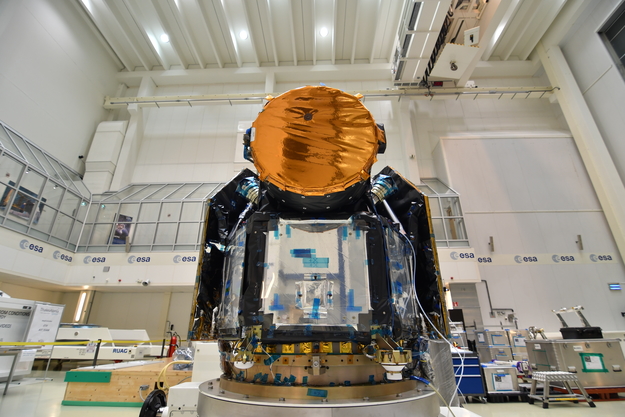“Mars is red, Earth is Blue,
We’ve discovered lots of new worlds,
And one of them is blue too!”
So I’m not a poet and I definitely know it! Nevertheless, last month thanks to the Hubble Space Telescope, astronomers were able to determine the colour of one the exoplanets closest to us. However, despite its colour similarity to our Earth, it is not quite like home.
Hundreds of exoplanets have been discovered in the last twenty years orbiting stars outside of our Solar System. Many of these worlds have been described as ‘Hot Jupiters’; planets which have a similar mass to the largest of our planets, Jupiter. Most of these types of exoplanets orbit very close to their parent stars making them much too hot for life to exist and taking only a matter of days to complete an orbit. While the search for liveable planets is thought to be most likely in the habitable region, in a region just at the right temperature from its star, some of these other exoplanets are proving to be fascinating worlds in their own right.

The blue world with raining glass located very close to its parent star. (Image credit: NASA, ESA, and G. Bacon (STScI).
Exoplanet HD 189733b was discovered in 2005, when the planet was noticed transiting across the face of its parent star. This exoplanet is located in the constellation of Vulpecula, the fox, a faint pattern inside the Summer Triangle. This planet is a not too distant 63 light years away so has been studied by space-based telescopes. Data collected from Hubble’s Imaging Spectrograph (STIS) when this planet moved behind its star showed that in the shadow of the star the light reflected from HD 189733b reduced into the blue part of the spectrum. This allowed the astronomers to determine that this world is blue.

Many exoplanets have been discovered using the transit method. This method is already used to in our solar System to determine size and scale. This is the transit of Venus in 2012. (Image credit: Wikimedia Commons)
Unlike the Earth which is blue because of water covering two thirds of the planet, HD 189733b is not blue for the same reason. The blue colour it thought to be caused by light reflecting off silicate particles churning about in the planet’s atmosphere, which is also thought to boast 4000 mph winds. This planet is also heated to around 1000° C, and is subjected to thousands of times more powerful X-rays than the Earth is from the Sun being 30 times closer than we are to the Sun. Therefore the heat of this planet has caused the silicate to melt and form glass. This planet’s atmosphere has also been discovered to be varied with violent flares, no doubt caused by its proximity to its host star. So despite the serene blue colour this is planet is extremely hot and fierce and also has fast-moving glass particles raining down. So definitely not a contender for a new Earth version 2.0.
As a year on this planet is only 2.2 days it doesn’t take long to catch this planet transiting across the face of its host star. So NASA’s Chandra Observatory and ESA’ s XMM observatory have used their X-ray ability to catch this blue gem transiting its parent star. By viewing this planet with X-rays, this allows astronomers to determine the features and properties of the planet. This transit method has only been used in optical light but being viewed in X-ray also suggested that the planet HD 189773b absorbs around 8% X-rays but only blocks 2% of light during the transit. This suggests that this blue exoplanet also has many layers in its atmosphere some of which allow the star’s light to pass through but still absorbs X-rays. However this theory will have to be explored further.

Illustration of the blue exoplanet transiting across the face of its parent star. (Image credit: X-ray: NASA/CXC/SAO/K. Poppenhaeger et al; Illustration: NASA/CXC/M. Weiss)
Exoplanet HD 189773b is the first exoplanet in which we have determined its true colour, and despite sharing similarities in colour to the Earth, this world is hot with violent storms and shares no other similarities with our home planet. In the last twenty years hundreds of exoplanets have been confirmed and thousands more stars have been deemed as hosts for candidate planets. Only time and research will tell if any other exoplanet could also be called the ‘blue planet’ or perhaps if any of these other distant worlds are another home away from home.
(Article by Martina Redpath, Education Support Officer)



1 Comment
Exoplanets Glossary | Astronotes · October 29, 2013 at 10:35
[…] Transits of a planet have been observed in the x-ray wavelength of the spectrum. When the planet HD 189773b was observed transiting its star the optical light dipped slightly, however the X-rays produced by the star dip 3 or 4 times as much as optical wavelengths. This suggests that this exoplanet’s atmosphere is transparent but is swollen due to the intense radiation it is subjected too. To read more about this planet, see The Blue Planet. […]